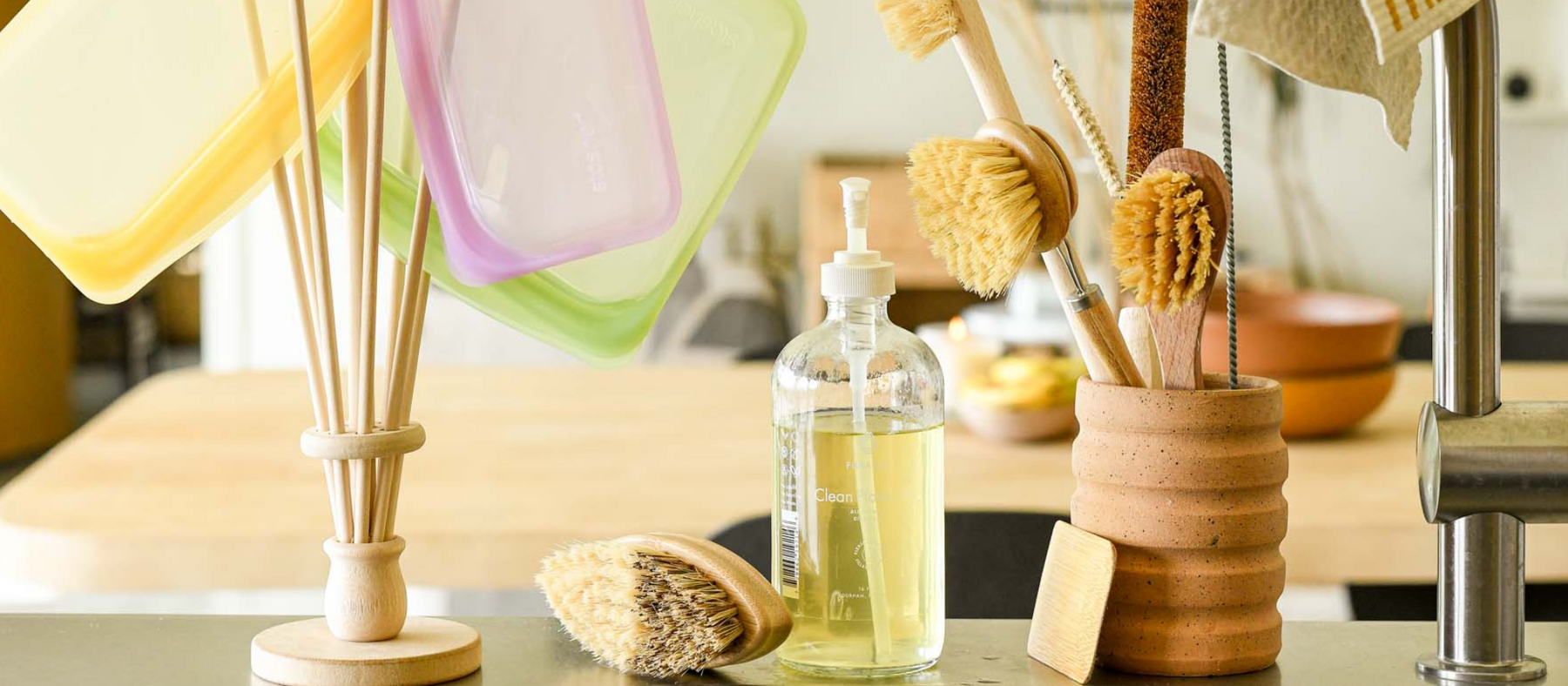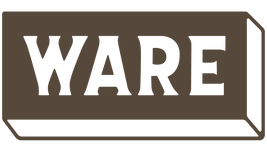
Plastic-Free Swaps for Your Home
1. Packaging
One of the most impactful places to ditch plastic is before it ever comes into your life. The wrappers, bags, clamshells and other forms of plastic packaging we encounter in stores (particularly in regards to food products) are collectively known as single-use plastic. They serve one purpose, getting the product to you, and then they become trash or occasionally recycling. We have finally honed in on the perfect product duo for replacing plastic produce bags with superior products: Organic Cotton Produce Bags and Vejibags. Produce bags for wrangling loose veggies and bulk products make for easily-transportable containers. You can then transfer the bulk goodies to jars (or Stashers, more on that soon) and Vejibags for longer-term storage. Go read about Vejibags. They’re so cool.

2. Baggies
So you’re “going green” and bringing more unpackaged products into your home. Your old plastic storage containers are filling up fast and your Pyrex is all holding leftovers in the fridge. You just want to take a snack to work without having to cart around glass or worry about leaking containers. Is that so much to ask?! No, it’s not. There’s a reason the world got hooked on plastic baggies. They’re freaking handy. And so are Stasher Bags. For just about all the same applications you once used disposable baggies, we’ve now got reusable, dishwasher-able, medical grade silicone bags.
3. Cleaning Products
For every liquid product we bring home, we need a container. We’ve come to take it for granted that the product needs its own container, most commonly plastic. We challenge our community to rethink that. What liquids are you using that could be solid bars or powders that you add water to at home? There’s obviously solid body soaps galore, but Solid Dishwashing Soap is now fairly easy to come by and doubles as a concentrate for cleaning hard surfaces or spot treating laundry stains. If you can’t past the mental block or don’t like the ergonomics of using solid soap in the sink, you can always bring your empty liquid soap containers to refill in our store.

4. Cleaning Tools
Collect all of your scrubbing tools and take stock. How many of them are plastic? Sponges and scrub brushes haven’t always been plastic, but now are almost always so. Wooden-handled brushes with plant-based bristles, loofah and wool sponges—these are some of the handy cleaning tools that can replace your plastic tools once they stop working. The natural alternatives to these plastic tools will eventually break down in nature, unlike what we find on most grocery store shelves.

5. Laundry
As with dish soap, we have bulk powdered laundry detergent that can be taken home in any container you have on hand. And it’s made 45 minutes down the road in Brevard! But we also have a VERY cool laundry aid whose importance you may not have considered before. Synthetic fibers in clothing and textiles are as ubiquitous as plastic is in every other corner of our lives. These fibers rub together aggressively in the washing machine. This friction is effective for cleaning clothes, but also releases tinier-than-thread particles of plastic that wash right down the drain and eventually into our waterways. These are called microfibers, and we’re consuming them in all kinds of terrifying ways everyday. The Guppyfriend bag is the solution we didn’t know we needed. You simply put all synthetic-fiber clothing in the bag like you might a delicates bag (except this one is quite large) and the exceptionally fine mesh catches all of the fibers while lettering water and soap flow freely. You can even see the collected fibers at the end of the cycle and empty them into the trash. Best option for now, but a great one, considering its versatility.

6. What you already have
No matter what product your favorite sustainability-preaching shop tries to sell you (oh, hey!), the best thing you can ever do for the planet is use what you have until it is totally spent. And then dispose of it responsibly. That may not always be the most Instagramable approach, but we’ve found climate change doesn’t care much about our feeds anyway.


Leave a comment